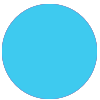Hi everyone.
Developing a zapier integraiton that consumes an GraphQl API, using cursor based pagination.
I have a hard time wrapping my head around the following scenario, and I hope you can help clarify.
Let’s say that the Zapier API sends a request every 15 minutes, and asks for a list of actions. The API responds with the latest 20 actions (i.e. page-size=20).
Simple scenario - one new action
In between 2 requests, a new action was returned by the API. Zapier correctly identifies this a new action, and the trigger fires away.
Advanced scenario - 25 new actions
In between 2 requests, 25 new actions are created. I somehow need to tell Zapier that we need to make another request. When I get the new response, I must inform Zapier that here we recognize an Id already processed.
How is the above accomplished in Zapier?





